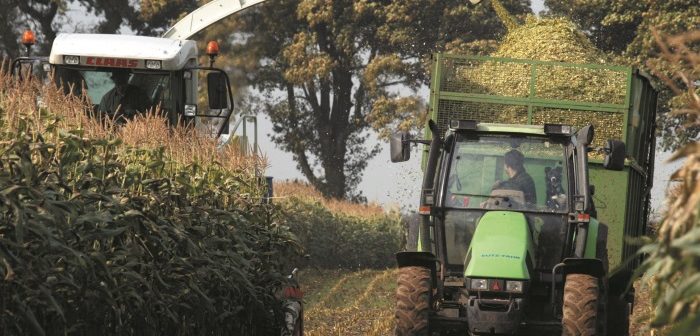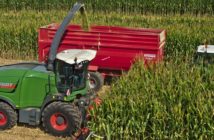Three years of maize trials at Askham Bryan College near York have highlighted remarkable production consistency despite widely differing growing conditions, says Wilson Hendry of Grainseed Ltd.
The three varieties Ballade, Bodyguard and Remington all achieved over 50t/ha freshweight and drymatters ranging from 30 – 33% dry matter despite very different weather patterns and harvest dates over the three years.
“It’s a real indication of how far levels of management have come on in recent years and a testament to the reliability of modern ‘Bred for Britain’ varieties,” Wilson Hendry explains.
“But it also shows what can be achieved in terms producing yield, digestibility and energy content when varieties are chosen specifically to match individual growing conditions and micro-climates.”
The college’s Westfield Farm is quite far North, but because it sits in the relatively sheltered Vale of York, it has a micro-climate that suits it perfectly to high-yielding ultra early varieties, he says.
“The target is to hit 50t/ha freshweight with a dry matter of around 30% and starch content of over 30% so the overall ME is capable of delivering the yields and quality the herd needs without having to buy too much additional feed in.”
In the trials in 2014, the variety Ballade produced 50.1t/ha freshweight at 31.3% dry matter with 33.7% starch content. In 2015, yield was 51.7t/ha at a dry matter of 29.7% with 2016 data mirroring this at 52.0t/ha yield 31.4% dry matter.
Remington showed similar consistency with 51.7t/ha and 31.3% dry matter in 2014, 53.3t/ha and 32.9% dry matter in 2015 and 50.4t/ha and 33.0% dry matter last year.
The variety Bodyguard produced the highest yield of all with 54.9t/ha in 2014 and 55.5t/ha in 2015 – both at over 30% drymatter.
“Achieving this type of reliability of production across very different years in terms weather patterns and heat units, not only gives you a lot of control over your costs by removing the risk of having to buy large quantities of feed in, it also helps considerably with ration planning.
Josh Banks, who manages the college farm on behalf of Velcourt, says management is key too, with drilling date being particularly important.
“We’ve had crops drilled one week apart and you can always see a difference throughout the rest of the growing season.
“We like to get crops in the ground in the last week of April if the soil temperature is right but often this stretches to first week of May. We don’t want things backing up in May, so if we can get in at the end of April it often works best for us.”
Maize land has FYM spread on at the start of the year followed by a dressing of slurry using an umbilical system with pipes running under the A64 main road so all parts of the land can be accessed.
“We’re trying to improve the quality of the land all the time. Certain areas are lacking in P and K so we want to get a lot of nutrients back in to the land and really build the organic content up.”
Seedbeds are prepared using a Sumo cultivator and then drilled. No additional fertiliser is applied once the crop is in the ground with all nutrition coming form the FYM and slurry applied before drilling. The crop then requires little management intervention until harvest, Josh says.
“The choice of varieties also has an impact on the reliability of our harvest date and this is usually the first week of October.”
The college has just invested in a 3000 tonne covered clamp with three bays, Josh Banks points out.
“Maize will always play a large part in the feeding of our herd. Getting the varietal choice and management right means we know we can produce good yields and excellent quality material reliably and consistently year in year out and gives us the confidence to keep making the necessary investment to make the crop really work for us.”




